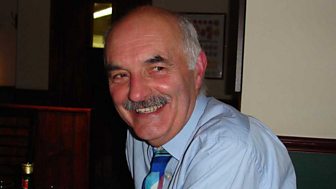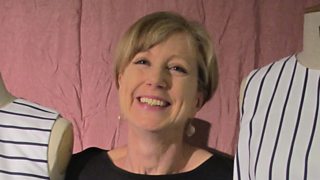William Rudling
I'm a professional artist who is always looking at people's faces, i.e. caricature events or portraits. Over the years I've noticed people's faces with similar facial features will have a matching intonation in the sound of their voice. Does this mean the bone structure of the skull and muscle tissue influences the vocal chord? More akin to a musical instrument perhaps?
| Fact title | Fact data |
|---|---|
| Name: |
William Rudling
|
| Occupation: |
Illustrator
|
| Location: |
Leeds
|
| Age: |
69
|
| Question: |
Do people who look the same, also sound the same?
|
How would you research this?
Take a natural source of noise (e.g. cutlery scraping on plates, chairs scraping on the floor) and vary the objects used (size of cutlery etc.) to change the frequency of the sound. Ask a wide range of brave volunteers to listen to each sound being performed and rate them on unpleasantness.
Alternatively, synthesise a range of sounds with various frequencies, all based on the waveform of an existing horrible noise. Test on volunteers as before. Once unpleasant frequencies have been determined, you could test harmonics of them to see if they have the same effect.
Take the test
You can take part in William's research by matching a selection of faces and voices in his online experiment. This experiment has been designed by William Rudling and his mentor Dr Paul Carter from Leeds University.
Background
Over his career as an illustrator, William started to notice that people with similar facial features also had similar voices.
Does the internal structure of our skull and muscle tissue influence the sound of our voice, akin to a musical instrument?
The experiment
Working with his mentor, Dr Paul Carter, William has designed an experiment to find out if people can match the right face to the right voice.
Ten male and female volunteers aged 18-22 from Yorkshire have been photographed and recorded reciting the same passage. These files are being used in their interactive experiment to test William's hypothesis.
William and Paul gathered data for their study at the Bang Goes the Theory roadshow in Sheffield from 5-7 May 2012, where 900 people took part in their test.
.
To talk to William and Paul about their experiment, click 'like' to follow their Facebook research diary.
The team have now launched a to further their research.
Scientific mentor
- Dr Paul Carter
- Postdoctoral Research Fellow
- University of Leeds
- Speciality: Phonetics
Results
William will present his results at the 'So You Want to Be a Scientist?' finals, which are being held at .
-
![]()
Scientists describe their work and share the excitement of their research projects.
Related Links

Amateur Scientist Research Diaries
-
![]()
Follow Izzy's research diary on Facebook
-
![]()
Follow William's research diary on Facebook
-
![]()
Follow Dara's research diary on Facebook
-
![]()
Follow Val's research diary on Facebook






